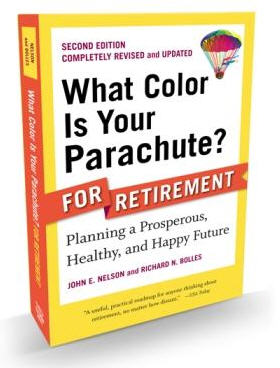
AARP Study Shows 50+ Workers as a Solid Investment
A report that challenges myths about workers 50 and older shows that those employees often have productive  advantages that make them far more cost-effective than is generally believed.
advantages that make them far more cost-effective than is generally believed.
The report, “The Business Case for Workers Age 50+”, prepared by global professional services firm
Towers Perrin for AARP, noted that there is a common business perception that 50+ workers “cost more” than younger workers.
The AARP/Towers Perrin analysis said that the extra per-employee total compensation cost of retaining or attracting more 50+ workers ranges from negligible to three percent in key industries. At the same time, the research found that older workers are more motivated to exceed expectations on the job than younger workers.
Earlier Towers Perrin research found that motivation is highly correlated with engagement, making it clear that both engagement and motivation increase with age. Moreover, this research found a strong relationship between employee engagement and financial performance, showing that companies with higher levels of employee engagement tend to outperform those with lower levels of engagement.
“These findings are especially important because the workforce is aging, labor shortages are projected in a number of sectors, and many employees intend to continue to work beyond the retirement age,” said AARP CEO Bill Novelli in releasing the study today.
“Keeping people in the workforce longer benefits the employee, the employer and society as a whole,” Novelli said.
“The report concludes that enhancing retention or hiring of older workers can result in marginal differences in total cost for the talent pools studied, while experienced people can offer a distinct performance advantage in many key roles,” said Towers Perrin Principal Roselyn Feinsod.
The AARP study comes at a time when projections show that by 2012, nearly 20 percent of the workforce will be age 55 or older, a jump from under 13 percent in 2000. This pattern is expected to continue well into the future, given that AARP surveys have shown that more than two-thirds (68 percent) of 50 to 70 year old workers say that they plan to work into their retirement years or never retire.
“The aging of the population may put employers in a tight situation,” said Alicia Munnell, director, Center for Retirement Research at Boston College, in responding to the study.
“They will no longer be able to rely on a rapidly growing group of younger workers in the future. Increased employment of older workers seems like a natural solution, but employers will have to change their hiring and retention policies if they want to attract these highly productive older individuals,” Munnell added.
AARP commissioned the study in order to assess the strength of the business case for investing an employer’s resources to retain and attract workers 50+. Towers Perrin developed the analysis based on a comprehensive review of proprietary Towers Perrin sources, AARP research, and public sources, as well as other third party sources. These included demographic data, benefit program data on over 700 companies, and research with workers and employers.
The report highlights four industries—energy, financial services, health care and retail—but the findings apply to companies in other sectors as well.
Among the major points of the report are these:
- The extra per-employee total compensation cost of enhanced retention of 50+ workers is modest, not exceeding three percent per year for the industries and positions studied. Offsetting factors are turnover-related costs of replacing veteran employees with deep institutional knowledge and job-related know-how, and the time it takes to select and train new workers.
- In the case of hiring more older workers, average age-based total compensation cost differences are negligible and hover around one percent per year for the four positions examined.
- Fifty-plus workers are more motivated to exceed expectations on the job than their younger counterparts, based on new analysis of data collected in a 2003 Towers Perrin study of more than 35,000 employees.
- Without exception, the 10 major employers interviewed for the study said that age 50 plus workers have experience and other desirable traits that translate into a tremendous plus for their businesses.
AARP is a nonprofit, nonpartisan membership organization that helps people 50+ have independence, choice and control in ways that are beneficial and affordable to them and society as a whole. We produce AARP The Magazine, published bimonthly; AARP Bulletin, our monthly newspaper; AARP Segunda Juventud, our bimonthly magazine in Spanish and English; NRTA Live & Learn, our quarterly newsletter for 50+ educators; and our website, www.aarp.org. AARP Foundation is an affiliated charity that provides security, protection, and empowerment to older persons in need with support from thousands of volunteers, donors, and sponsors. We have staffed offices in all 50 states, the District of Columbia, Puerto Rico, and the U.S. Virgin Islands.
